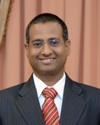Human Rights Monitoring Mechanisms
A set of committees, working groups, processes, and UN bodies contribute to safeguarding the promotion of respect for human rights.
The UN Human Rights Council (HRC) is an intergovernmental body established by the General Assembly in March 2006 to address human rights concerns and to make recommendations to the General Assembly. The HRC is comprised of 47-member states that are elected by the UN General Assembly. Members of the Council are elected by the General Assembly to three year terms. The Human Rights Council uses several tools to perform its work. Its primary instruments are the Special Procedures, Universal Periodic Review, and the UN Treaty Bodies.
The Special Procedures are a set of mandates that are established and authorized by the Human Rights Council to monitor, investigate, and report on 38 human rights themes globally, and on the human rights situations in 8 countries. Mandates are established by majority vote of the HRC Member States and they appoint individuals,or groups of individuals (also known as working groups) to manage the mandates. These individuals are called Special Representatives or Rapporteurs. Special Procedures usually receive allegations of human rights violations from individuals and/or non-governmental organizations (NGOs) that are investigated and analyzed by appointees.
The UN Human Rights Council also monitors human rights in all Members of the United Nations through a process known as the Universal Periodic Review (UPR). The UPR is a process that allows for the review of the human rights records of all 192 UN Member States . The UPR is a State-driven process, where States are required to submit a self-assessment of its human rights record to the Human Rights Council.
The implementation of human rights treaties is monitored through committees called the Treaty Bodies. Each treaty has its own committee that is assigned to ensure that parties to conventions protect and promote human rights guaranteed in the conventions every five years.
Latest news
- Iran needs to be ‘named and shamed’ on rights violations August 06, 2013
- Ahmed Shaheed on the death penalty in Iran July 28, 2013
- UN expert to investigate alleged rights violations in Iran through diaspora in the US and Canada July 17, 2013
- Iran presidential vote not free, fair: UN rights envoy June 14, 2013
- Iran: UN experts concerned at barring of women presidential candidates and freedom restrictions May 30, 2013
- UN human rights experts urge Iran to release Baha’i community leaders May 14, 2013
- Watch Live: Dr. Shaheed's talk with Balavision April 22, 2013
- Listen: Dr. Shaheed on Elections and Women's Rights April 17, 2013
- Amnesty International Sheds Light on the Death Penalty in 2012 April 10, 2013
- UN expert raises alarm over increased degree of seriousness of human rights violations April 19, 2013

